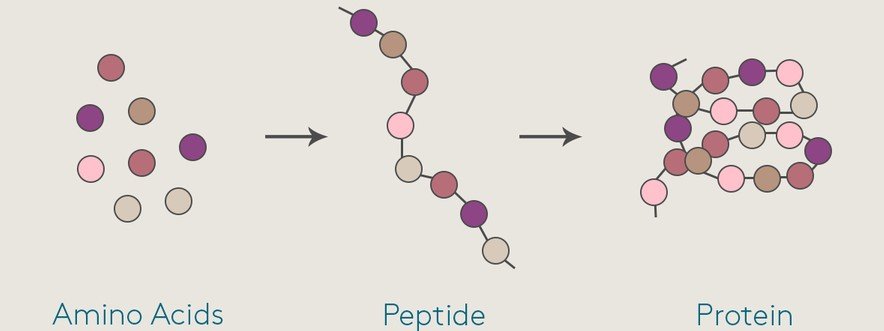Discover a new mode of doping with peptides by understanding their role, their origin and their properties for the sportsman.
Man has always tried to improve his physical performance, to surpass himself. Doping in sport is concrete proof.
All the major sports competitions of the modern era have known their share of "scandals": the Tour de France, the Olympic Games, football, baseball ... Doping was even already present in antiquity. The first examples, described by Greek authors, date back to VI centuries BC.
The world anti-doping agency has evolved at the same time as the doping methods themselves to make reliable and dissuasive tests.
"These extensive controls, combined with the significant side effects of products like anabolic steroids, had the effect of dissuading many professional athletes from using doping products. Body culture has also become one of the priorities of the average sportsman who also no longer has taboos as to the use of this type of product.
"
It would therefore seem that the world anti-doping agency is worried about an upsurge in the number of athletes concerned, but above all because of a new generation of undetectable products: peptides (or peptide hormones).
Peptides, what are they?
The peptides are molecules naturally synthesized by the body. These peptide hormones are in fact "messengers" which will lead to the production of new hormones, such as Testosterone for example.
More commonly known as "peptide bonds", a peptide is a polymer of amino acids linked together.
Peptides are molecules created by joining two or more amino acids. They are present in all living cells and possess a variety of biochemical activities. Usually, if the number of amino acids is less than fifty, these molecules are called peptides. The large sequences are called proteins. So, peptides can be thought of as tiny proteins which are simply chains of amino acids.
Peptides are a revolution. It is research that was successful just a few years ago and which is starting to make its place in the world of sport and doping.
One molecule for each sport.
Genetic doping is based on numerous researches in gene therapy.
In order to find a way to restore muscle growth in people with muscular dystrophies, the team of Doctor Se-Jin Lee of John Hopkins University in Baltimore (United States) carried out in 2007 a double genetic modification on mice, which then produce more follistatin - a hormone that promotes muscle growth - and less myostatin - a protein that limits it.
The result: literally bodybuilding rodents with 4 times more muscles than normal animals.
By working on the PPAR gene, the team of Johan Auwerx from EPFL recently created mice which run not faster, but twice as long. And that's not all: 2 other genes that could improve sports performance have been identified by sports doctors at the Technische Universität München.
There is therefore only one step to imagine a complete panoply of genetic techniques adapted to each sport according to the aptitudes required (Endurance, strength, speed…) to increase the performances of the athletes.
Undetectable molecules, WADA in a delicate position.
Recognizing the enormous potential of the method, the World Anti-Doping Agency (WADA) has anticipated the movement. In 2003, it generically included genetic doping on the official list of "doping substances and prohibited methods".
WADA has since funded several research programs to try to develop reliable detection test methods. Indeed, as Bengt Kayser points out :
“For the moment, we do not know very well how to detect genetic doping. The product sought is often very similar to the substance produced by the body and therefore indistinguishable from the molecules naturally present. ”
Specialized laboratories always go further.
Peptides are therefore today products considered to be doping, almost undetectable and bringing surprising results if some users are to be believed.
(Testimony of Vincent, amateur cyclist: "Since I discovered peptides, I only take that and without risking being tested positive during anti-doping controls. But above all without side effects, unlike conventional doping products. such as EPO or the steroids I used to use ”).
Some laboratories have gone even further in research and now offer a mix of peptides. They combine two peptides to create a combined effect, even more powerful than if these two peptides were taken separately.
Sportspeople are no longer the only ones affected by peptides and you can easily imagine that these products are consumed by everyone.
Research keeps one step ahead of controls.
With this new type of product, doping is not about to disappear. Indeed, until now, the athletes feared a suspension and a heavy fine in case of positive control. But with this new type of doping called "genetic", almost undetectable in the event of control, it is a safe bet that many of them will turn to these new methods.
WADA should therefore redouble its efforts in order to be able to continue to fight effectively against this new form of doping and thus guarantee healthy and fair competitions. If it does not succeed then we will most likely see many world records fall one after the other.




